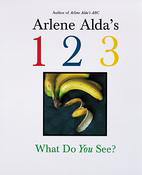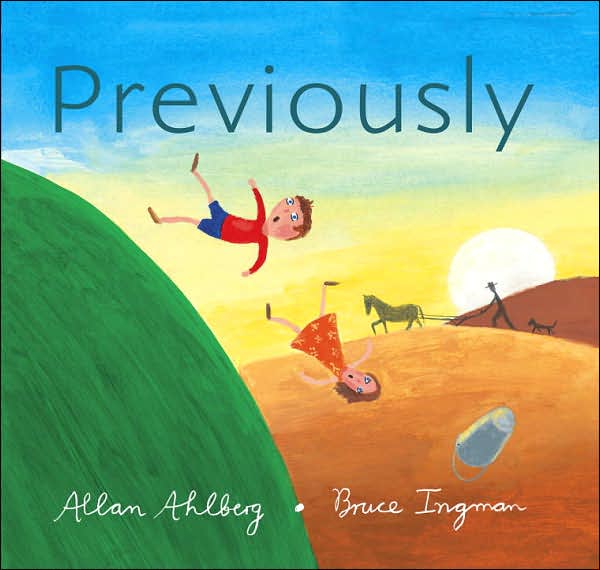 Disclaimer: The book I describe and rant about within this page was read during my endeavor to read every book in Eiseley library and while following along with Carrie’s Reading My Library project. However, the contents of this post are more a political/social rant than a book review. Just letting you know.
Disclaimer: The book I describe and rant about within this page was read during my endeavor to read every book in Eiseley library and while following along with Carrie’s Reading My Library project. However, the contents of this post are more a political/social rant than a book review. Just letting you know.
I’d never heard of the Universal Declaration of Human Rights (adopted by the UN in 1948) until I found a children’s version published in my local library. The book was entitled We are All Born Free: The Universal Declaration of Human Rights in Pictures.
I had relatively low expectations of the book. After all, it’s an ideological children’s book written by a committee (Amnesty International). That doesn’t exactly make for soaring prose or beautiful language. In fact, it usually means it’ll be boring as all get out and clunkier than your first car. And so it was.
But that wasn’t what bothered me. What bothered me was the ideology contained within the Universal Declaration of Human Rights (which I have now taken a look at, thanks to this book.)

I didn’t have a problem with statements 1 and 2, dumbed down for children as “We are all born free and equal. We all have our own thoughts and ideas. We should be treated in the same way. These rights belong to everybody, whatever our differences.” Okay.
So too, the third statement: “We all have the right to life, and to live in freedom and safety.”
The fourth statement, against slavery? Statement five against torture? Yep.
A right to equal protection under the law? Sure. I’ll allow habeas corpus for all. (Statements 6-11)
After this, the statements get a bit sketchier. A few I don’t mind (although I’m not sure they’re followed anywhere–even in the US). Equal rights for males and females. Right to your own property (and against seizure without good cause.) Right to believe whatever we’d like. Right to make up our own minds. Right to speak our minds. Right to peacefully assemble. Right to vote. Okay. I’ll grant these.
But right to a home? Right to enough money to live on? Right to medical care? Right to ART? Right to a job? Right to a vacation? Right to a good life? Right to a free education? Right to learn a career?
Are you serious? In my mind, these things aren’t RIGHTS–these things are things you earn. You work to own a home. You work to earn money. You work to get medical care. You enjoy art because you choose to and you pay for it. You take a vacation when and if your employer allows it–or you quit your job and live with the consequences. You pay for your own education. You choose to do whatever it takes to learn a career. These things aren’t rights. They’re privileges that are earned. Who comes up with this stuff?
We often excuse such blather as the Universal Declaration of Human Rights because we’d love it if this Utopian society it describes existed. We’d love it if everyone had a free education, if everyone enjoyed the good life (Come to Nebraska–we are “The Good Life”), if everyone had access to art, if everyone had a roof over their heads and enough money to live on. We’d love it. We want that to happen. I want that to happen.
But just because something is desirable does not make it a right.
The noun right means something due to a person or community by law, tradition, or nature. If we are to modify the noun right with the adjective universal (which means of, relating to, or affecting the entire world or all within the world), then we must strike out the words “law” and “tradition”, since there is no universal law or tradition. We must define a universal right as something due to a person or community by nature (although I would argue that the modern “nature” is less appropriate than America’s founding father’s explanation of the source of inalienable rights: our Creator.)
In other words, universal rights are things that are due to people for the sole reason of their being people, regardless of who they are or what they do. Notice that term “due”? Universal rights are things that are owed to every person, regardless of their condition. They are the things that we all have a moral obligation to give to one another.
Most of these things listed as “rights” by the Universal Declaration of Human Rights are nice things. Wouldn’t we all love to have a free education? Wouldn’t we all love to have a roof over our heads? Wouldn’t we all love to have a job? Wouldn’t we all love to have enough money to live on? Wouldn’t we all love a vacation? Sure. (At least, I would love to.)
But the question is, do I have a moral obligation to give everyone else in the world a free education? Do I have a moral obligation to give them a roof over their heads? Do I have a moral obligation to give them a job? Do I have a moral obligation to give them enough money to live on? Do I have a moral obligation to give them a vacation? If those things truly are universal rights, than I am morally obligated to do all those things for every other person.
But I’m not. I don’t have to give everyone else an education, a roof over their heads, a job, enough money to live on, or a vacation. Those aren’t universal rights–things owed to everyone for mere virtue of their existence.
Universal rights means that I have an obligation to not kill anyone else (they have a universal right to life). I have an obligation to treat others justly (they have a universal right to equal protection under the law and habeas corpus). I have an obligation to not enslave or torture others. I have an obligation to not steal others’ property. These are universal rights–things due to all people by nature.
The rest? Many are nice to have but not necessarily defensible from a natural or moral point of view. It’s nice to belong to a country–but do I have a moral obligation to give another belonging in a country? It’s nice to have a “good life”–but do I have a moral obligation to give you a “good life”? No, not really. (I might, however, have a moral obligation to not give you a bad life–or to not interfere with your pursuit of a good life.)
Others are not only indefensible from a natural or moral point of view, but are actually contrary to other, clearly defensible universal rights. If everyone has a right to a free education, who pays for it? If everyone has a right to a home, who provides it? If everyone has a right to enough money to live on, who gives them this money? If everyone has a right to medical care, who provides this care? These things are not free. They all have a cost, either in time or in money or both. If these are universal rights, that indicates that they are due to all people REGARDLESS of what they do or do not do. Which means that the only way to ensure that everyone gets what is “owed” to them under this definition of universal rights is to compel another person to give it to them either by laboring under compulsion (slavery) or by giving up their possessions under compulsion (a form of stealing). Yet, slavery and stealing are clearly recognized as violations of true universal human rights.
In the midst of feel-goods about free medical care and education and homes and jobs and money, we forget that for every privilege we wrongly define as a right, we take away another true right.
For the sake of preserving human rights, let’s let our list of rights be short–but strictly observed.




 Not much, except that another chicken hears and tells her best friend.
Not much, except that another chicken hears and tells her best friend. Hans Christian Andersen’s For sure! For sure! translated by Mus White and illustrated by Stefan Czernecki is a timeless tale about gossip and how rumours spread. I had never heard this particular tale of Andersen’s and was delighted to discover it in my trek through the children’s section of my local library.
Hans Christian Andersen’s For sure! For sure! translated by Mus White and illustrated by Stefan Czernecki is a timeless tale about gossip and how rumours spread. I had never heard this particular tale of Andersen’s and was delighted to discover it in my trek through the children’s section of my local library.
 Debbie Allen’s Brothers of the Knight is an imaginative retelling of The Twelve Dancing Princesses–except that instead of twelve princesses, there are twelve brothers–the sons of the Reverend Knight.
Debbie Allen’s Brothers of the Knight is an imaginative retelling of The Twelve Dancing Princesses–except that instead of twelve princesses, there are twelve brothers–the sons of the Reverend Knight.








